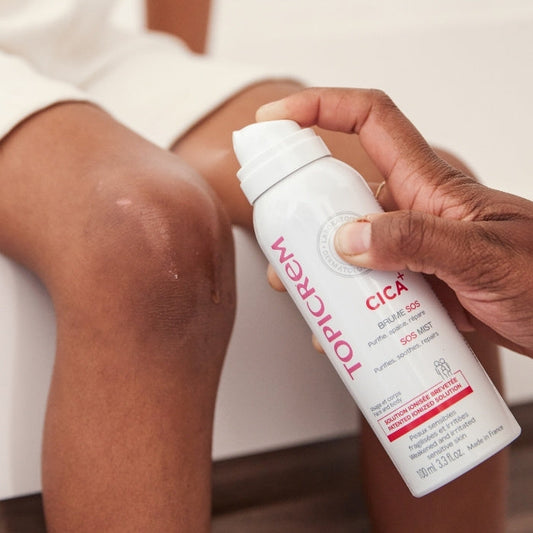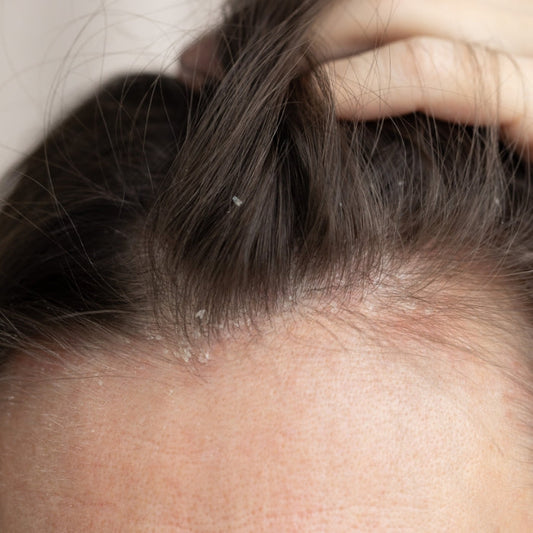Expert Advice & Tips

Eczema: better understanding the affected areas...
Discover the areas frequently affected by eczema and how to treat them with the DA PROTECT range from TOPICREM. Practical tips to soothe your skin.
Read the article
Soft skin in winter: our tips and TOPICREM cares
Discover our pampering tips for soft and hydrated skin this winter: treatments, exfoliation, and hydration with TOPICREM products adapted to the cold season.
Read the article
Soothing dry and irritated skin: essential anti...
Learn how to soothe itching caused by dry skin with our TOPICREM tips and products. Discover simple steps to care for your skin and prevent irritation.
Read the article
Eyelid eczema: understanding the causes and sym...
In this article, we explain everything about eyelid eczema: why this area is so vulnerable, how to recognize the signs of eyelid eczema, and above all, how to take action on a daily basis with appropriate dermocosmetic actions and treatments.
Read the article
Skin problems: discover TOPICREM's SOS cares fo...
Certain periods in life—stress, seasonal changes, hormonal imbalances, allergic reactions—can put our skin to the test. Redness, dryness, breakouts, itching: skin problems are numerous and sometimes uncomfortable. To help the skin regain calm and comfort, TOPICREM offers a selection of SOS treatments specially designed to address each concern, with gentle, high-tolerance formulas, tested under dermatological control.
Read the article
Atopic dermatitis: the impact of the seasons an...
Having atopic skin is no walk in the park... Also known as eczema, atopic dermatitis is a chronic inflammatory skin condition that affects both children and adults. It causes itching, tightness, and redness. Flare-ups are uncomfortable and can significantly impact quality of life.
Read the article
Which shower gel is right for you and your skin?
Find the perfect shower gel for your skin with TOPICREM: hydration and softness, discover our products adapted to each skin type, including our new Shower Milk
Read the article
Mains et lèvres : ces zones sensibles à choucho...
Prendre soin de son visage est important. Mais d’autres zones méritent notre attention : ce sont nos mains et nos lèvres ! Car ces zones révèlent un peu de nous - nos gestes, nos échanges, nos sourires… et pourtant, elles sont souvent reléguées au second plan dans notre routine de soins. Exposées en permanence aux agressions extérieures, les mains et les lèvres méritent tout notre soin pour rester douces, souples et confortables. Dans cet article, nous vous expliquons pourquoi ces zones sont particulièrement délicates, et surtout, comment en prendre soin au quotidien pour leur offrir protection, confort et les rendre plus belles.
Read the article
Soothing Children's Aches and Pains at School: ...
Scratches, superficial cuts, grazes or redness... at school, small skin injuries are part of everyday life. To help your child get through these minor injuries calmly, a few first aid steps are enough: gently clean and disinfect, protect the skin and reassure the child. Discover how the CICA+ range from TOPICREM and in particular the SOS Mist become your practical allies in everyday life, to slip into the first aid kit, in the school bag or to take on a trip for a worry-free All Saints' Day vacation.
Read the article
Sensitive scalp: understanding and treating dan...
We often talk about sensitive skin when we talk about facial skin... but did you know that the scalp can also be fragile? Discomfort, itching, redness, and even dandruff are signs of an unbalanced scalp. But while these discomforts are common, they are not inevitable. It is possible to soothe a reactive scalp and limit the formation of dandruff that often accompanies it. In this article, we suggest you better understand your scalp by identifying the possible causes of dandruff, but also adopt the right actions and appropriate care to regain a healthy and comfortable scalp and treat your dandruff.
Read the article



